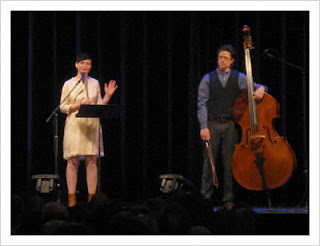That was the strong message conveyed at a Cato book forum where Washington University law professor Brian Tamanaha presented data he’s found researching law school statistics which he describes in his newest book, Failing Law Schools.
The U.S. Bureau of Labor Statistics predicts only 22,000 law school graduates will be needed this year, but 40,000 will earn law degrees, Tamanaha said.
Brian Tamanaha by Lorenzo Ciniglio-WUSTL
Why the imbalance?
Market demand.
During a period of economic uncertainty and high unemployment, many perceive more education, including law school, to be a good investment. But the cost of a legal education (tuition, debt, jobs and salaries lost while attending law school) far outweighs the value, according to Tamanaha's research.
SPRING COUPON_MARCH MADNESS_Save 15% on hotels near the Big Game with code MARCHBBALL15
The 2013 crop of prospective lawyers will be a big one despite the leap over 11 years (2001 to 2012) of law school costs which more than doubled for students at public universities and almost doubled for private school students.
The highest cost to earn a law degree is found at Columbia University: $82.000.
Catholic University ranks No. 7 in top charges and just about 44 percent of its grads secured fulltime legal jobs, carrying a debt load of about $142,000, according to the numbers Tamanaha cited.
Nine months after graduation, about 55 percent of law school graduates overall had found fulltime law jobs, and half of them earned between $45,000 and $60,000. Many cannot meet their monthly school loan payments.
About 90 percent of students finance a portion of their schooling, and when they graduate, public law school students face an average debt load of about $76,000; private university students, $125,000.
Tamanaha said he wasn't making anything up: His statistics come from the numbers reported by law schools themselves.
Law schools are so hungry for students, the acceptance rate has climbed to 80 percent v. 50 percent in 2004 indicating “a declining quality of the pool.”
But it looks like some prospective students have gotten the message. In 2010, 20,000 took the LSAT but only 1,300 applied to law school.
Another law professor on the Cato platform with a book to sell was Paul Campos from the University of Colorado at Boulder whose most recent book is Don't Go to Law School (Unless).
With a lot of caustic humor which made audience members laugh several times, Professor Campos said half of the 200 law schools sanctioned by the American Bar Association have “absolutely no justification for their existence.”
He said exaggerated numbers presented by law schools show "clearly, some instances of fraud."
Campos called a legal education "dysfunctional in so many ways.” It can block employment since some employers are scared of hiring lawyers.
Take the law degree off your resume and go out and get a real job, he urged the unemployed.
Also, the mass media presents “a false image” of lawyers. (Writer's note: U.S. Supreme Court Justice Sonia Sotomayor who watched a few episodes of Perry Mason when she was growing up might have a different take.)
Cato's Neal McCluskey said colleges and law schools are “profit-making industries” which welcome student funding that is borrowed from taxpayers to pay for education. He called for the elimination of federal aid to education which would allow private lenders with a “natural interest” to loan money and benefit all principals.
Rankings by U.S. News and World Report are "very superficial," McCluskey said.
Save $300 off qualifying flight + hotel vacation packages with code SPRINGME300
Rankings by U.S. News and World Report are "very superficial," McCluskey said.
Save $300 off qualifying flight + hotel vacation packages with code SPRINGME300










.jpg)











.jpg)






.jpg) St. John's Episcopal Church, Lafayette Square/
St. John's Episcopal Church, Lafayette Square/ 













